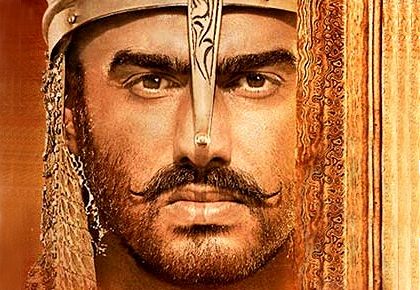'Kriti Sanon is a superb actress, she looks Maharashtrian, and has not done a historical.'
'Sanjay Dutt has gone to another level of persona. He hasn't done a historical either.'

Panipat is a "very intriguing storyline which you are not told because the battle was lost and, of course, all of us like victories," Ashutosh Gowariker tells Rediff.com Contributor Mohnish Singh why he decided to make a film on the Third Battle of Panipat.
How do you make a historical film look contemporary?
This is the first question I ask myself when I choose a script.
It can be a modern film or a historical.
If it is a historical, selecting the right one becomes most time-consuming.
When I plan a film, the theme becomes very important.
I think about a theme that can connect with the audience.
When I watch a film in a theatre, at least 10 phones come on every minute. I have stopped telling people to keep their cell phones off (during special screenings).
We have become habituated to cell phones, especially women.
They can multi-task. They can watch a movie, check what is going on in their homes and what their children are doing. So you cannot change that.
In such a scenario, how do you give a screenplay which is fast moving, interesting at all times and action-oriented, even if it is a smallish film?
And how will you do it with patience with a period film?
That's the first question that comes up.
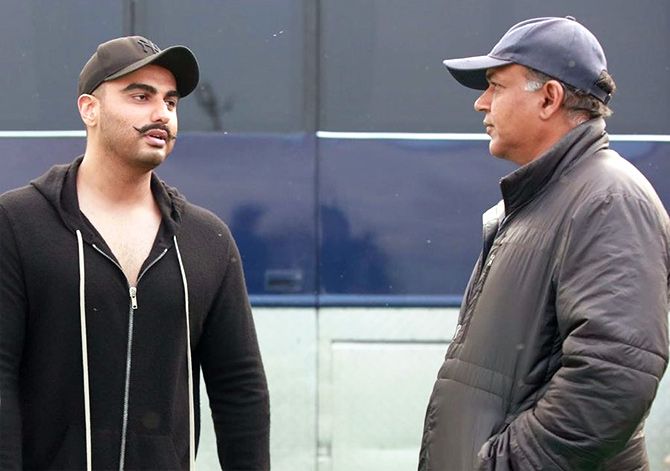
There will be comparisons with films like Jodhaa Akbar and other historical movies. What kind of newness do you plan to bring with Panipat?
That newness comes from the script or the period I choose.
Like, for example, if I made Jodha Akbar, I knew I would not make anything on Jahangir or Shah Jahan. Because that's done.
For me, the Mughal period is done.
When I talk about the British Raj, I made Lagaan. So I am not interested in anything after 1857.
See, comparisons will always happen.
If you are doing a battle film, it will be compared to a previous battle film.
Now I am doing the Peshwa period.
Naturally, when you see the trailer, everyone will compare it to Bajirao Mastani.
The fact is that they all are Bajirao's children in this film.
It is the next generation after 20 years.
So the clothes have to be same, the place Shaniwarwada has to be the same.
The story is what really defines how different the film will be.
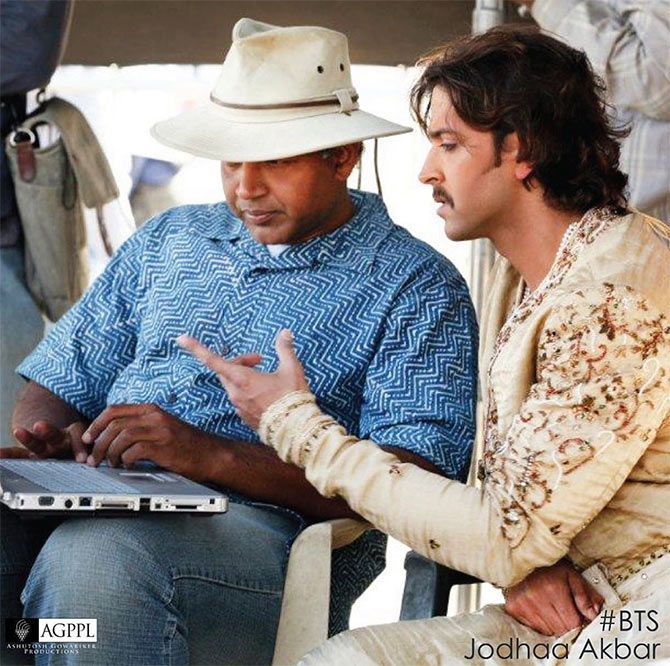
Did you think about how you would make sure the comparisons did not get too much?
Not at all.
When I cast Hrithik Roshan in Jodhaa Akbar, he was compared to Prithviraj Kapoor from Mughal-e-Azam. There was no connection at all. So I don't think about it.
I think about the character I have chosen.
Sadashiv Rao Bhau Peshwa is very adamant, a large man.
Arjun Kapoor was the only actor that could fit that kind of character. Plus, he has not done any historical films.
Kriti Sanon is a superb actress, she looks Maharashtrian, and has not done a historical either.
Sanjay Dutt has gone to another level of persona. He hasn't done a historical either.
So, these three coming together had a kind of freshness, and I wanted to capture that.
Here, I am not thinking that Sanjay Dutt has already played Kancha Cheena in Agneepath, so why make him a villain again?
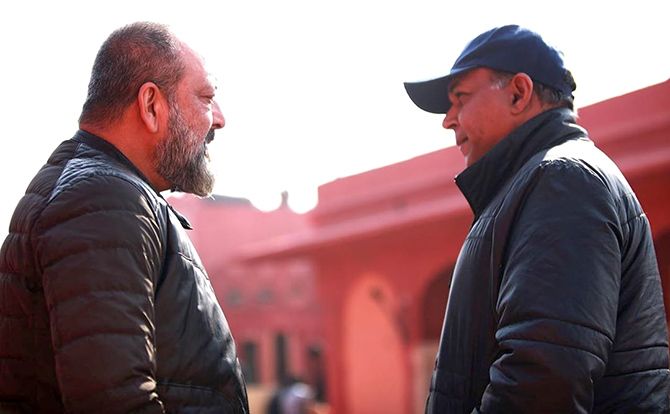
Why did you choose Panipat as your next?
We have heard about the three battles of Panipat.
But do you know why these three battles were fought in Panipat?
What was so special about Panipat?
Panipat is located on the outskirts of Delhi, in the north west. Any invader who came in, had to be stopped there before entering our territory.
The first battle of Panipat was in 1529.
The second battle of Panipat was in 1556, which I showed in Jodhaa Akbar.
This was not supposed to be a battle in Panipat.
It was supposed to be an entire army travelling thousands of kilometres up north, to stop an invader approaching Delhi.
But the circumstances were such that when Ahmed Shah Abdali and his army came in, they were on the two sides of the Yamuna.
How that chase happened across the Yamuna, how they went up north and, finally, how they reached Delhi is what you see in Panipat.
So it is a very intriguing storyline which you are not told because the battle was lost and, of course, all of us like victories.
But we like tragedies too.
This army consisted of Hindus, Muslims, Marathas of all castes and farmers. It was unification of a different kind.
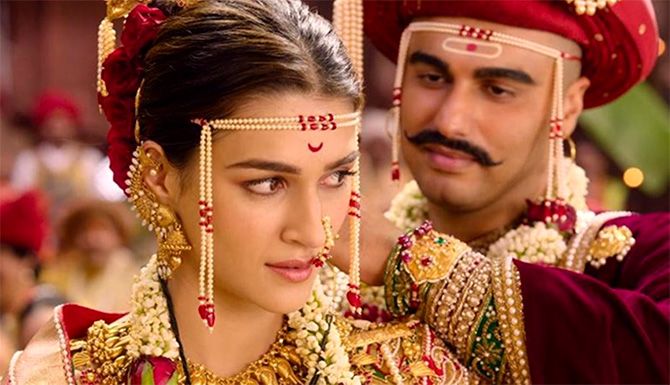
You said these actors bring freshness. But how challenging was it to mould them, as they have a certain style?
So first, I watched their films.
I studied them.
What quality did they have in which they excelled?
I must use that (quality) for which they got their stardom, for which they became popular, and utilise that and blend what I have in mind for Sadashiv and Parvati Bai.
Kriti has a certain contemporary quality in her, so I wanted to use that.
So I am creating Parvati Bai, my regal loyal character, but it has Kriti's quirkiness.
Sanjay has his own persona, but I made him emperorical because his behaviour is more emperor-like.
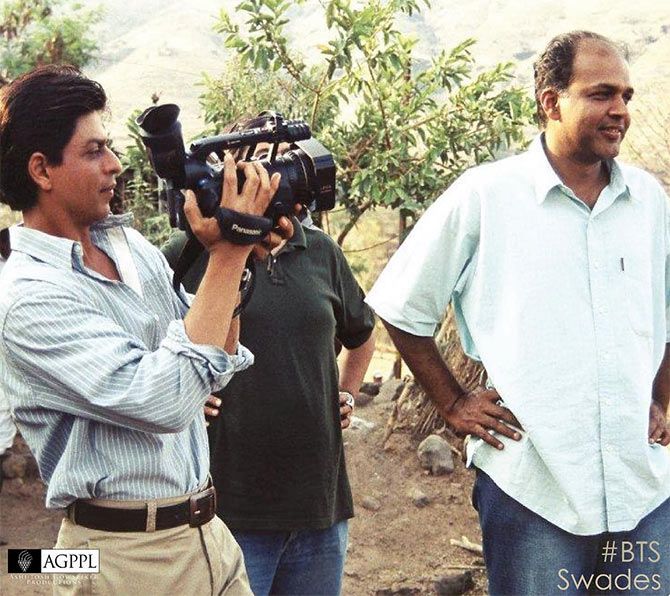
Most films in your filmography have been historicals. Where do you get the strength to create a world that no one has ever seen?
Whenever a historical film of mine nears completion, the first thought that comes to mind is that my next film should have only two characters, the story should happen in the night, in one room, mostly in Switzerland where there is no difficulty and we will wrap it up in 18 days!
But when I start thinking about a film, it is not that I want to make a historic again.
It's always the theme that I look for, what inspires me.
And that theme turns out to be history! (laughs)
After Jodhaa Akbar, I made What's Your Raashee?
Then I made (television series) Everest.
Before that, Circus.
So those were contemporary stories in between films.
But the story of Panipat is authentic on a different level.
In Jodha Akbar, whatever happened between Jodha and Akbar inside their palace is not known to anyone.
I could do what I wanted to do.
But here, I have tried to keep in mind the realistic and authentic portrayal of things that happened in their journey.
When I decide to make a historical and the time it would take, I first sit with my wife Sunita.
I tell her that this is what I want to do and this is the time it will take. Should we go ahead?
'Is your mind frame still the same? We just finished Mohenjo Daro and now, Panipat?' she had asked.
She has to get excited from the script level because she will have to be with me when I'm doing it.

When a section of the audience accuses you of distorting facts, how do you deal with that?
When it comes to history, every 10, 15 years, a new historian comes and invalidates all previous books and theories.
When he writes his own book and postulates a new idea or adds a new angle, people will question him.
Then he will say that he got two new letters and he's adding on the basis of that.
In historical stories, there are many problems.
Nobody knows who has written the right things and who has written the wrong things.
I am not a historian.
As a film-maker, I am trying to give a chapter of history an audio-visual.
Every history book has some 400, 500 pages. You cannot adapt the entire book for its screen adaptation.
As a film-maker, I can decide which chapters to include in my adaptation.
Whatever gets edited out is questioned. Whatever you keep also gets questioned.
When I did Jodhaa Akbar, I referred to Akbarnama, Ain-i-Akbari and Muntakhab-ut-Tawarikh. These books belonged to the era of Akbar.
For Khelein Hum Jee Jaan Sey, I took the account from Manini Chatterjee.
Here, I have taken the 1946 account of (Tryambak Shankar) Shejwalkarsaab.
I am prepared for the questions thrown at me.
I don't feel bad when I have to sit and explain because history belongs to everyone.
Mohnish Singh dabbled as a copywriter before making a transition into entertainment journalism.
Besides writing about movies and television, he engrosses himself in books and old Bollywood melodies.
You can contact him at movies@rediff-inc.com
